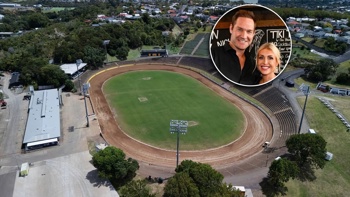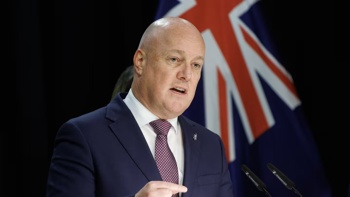Waka Kotahi is being accused of being too risk-averse after closing the Auckland Harbour Bridge on five occasions on Saturday.
The transport agency lowered its threshold for closing all lanes of the bridge after it was damaged by a truck crash in 2020, and Devonport-Takapuna local board member George Wood believes it is now over-reacting.
Concerned about the “mayhem” caused by repeated closures, he wants Waka Kotahi to review its procedures for closing the bridge or look at alternative solutions.
“It seems ever since that truck hit the bridge they’ve got the jitters and they’re so risk averse that I think their reasoning and the way they do it needs to be looked at,” he told the Herald.
One of his suggestions was more precise, to-the-minute forecasting - but meteorologists said this had previously proven complex and costly.
Wood, a former councillor, said the successive closures on Saturday, when wind gusts reached 91km/h, were frustrating.
“It seems that it shuts and then a short time later it opens again. So have they got better systems they could put in place to actually monitor the gusts?”
/cloudfront-ap-southeast-2.images.arcpublishing.com/nzme/G2WNMKN2X76P3DQTLXEDL3DTBE.jpg)
Former Auckland councillor George Wood wants Waka Kotahi's procedures for closing the bridge to be reviewed. Photo / Dean Purcell
Waka Kotahi maintainence and operations manager for Auckland and Northland Jacqui Hori-Hoult said the agency’s priority was public safety and the bridge structure, and it did not take the decision to close the bridge lightly.
All lanes were closed when wind gusts exceeded 90km/h. The direction of the wind was also taken into account, and there were different limits for headwinds or crosswinds.
Waka Kotahi noted the role of climate change and its effects on the transport network.
“While the overall annual rainfall total has not increased by much, the intensity has, resulting in much higher numbers of short, sharp intense rainfall and high wind gusts affecting the Auckland Harbour Bridge,” Hort-Hoult said.
Wood said he accepted that changing climate patterns played a role in more frequent closures of the bridge in the past few years but felt that there needed to be a pragmatic solution than constant closures.
The truck crash in September 2020 was caused by a 127km/h gust of wind. It led to the closure of some of the bridge lanes for more than two weeks while repairs took place.
Before the incident, all lanes of the bridge were closed if the perpendicular wind speed was averaging 100-110km/h and the oblique wind speed was exceeding 120km/h. Those thresholds were lowered to 90km/h and 105km/h respectively in October 2020.
While Wood was seeking more sensitive modelling of high winds, previous experience has shown this can be difficult.
National Institute of Water and Atmospheric Research (Niwa) scientists were coincidentally testing a highly localised wind forecast for Emirates Team New Zealand in the Hauraki Gulf at the time of the truck crash.
They found that while they could accurately predict the time and direction of the wind around the bridge, they underestimated the most extreme wind gusts.
The bridge’s structure caused the wind to speed up at road level, with gusts and mean speeds 10 to 15 per cent higher on the road surface compared to the forecast peak gusts.
Meteorologist Dr Richard Turner, who worked on the modelling, said he sympathised with the transport officials who were responsible for making decisions about closing the bridge.
“It is tricky. They have to think about safety first and foremost and I couldn’t imagine they would do it lightly.”
Niwa’s modelling showed it was possible to do highly specific forecasting of a structure but also that it would be “hideously expensive” to run because of the computer power required, Dr Turner said.
Another suggestion has been building wind breaks onto the harbour bridge - though that has not been seriously considered by Waka Kotahi and is believed to raise a number of engineering problems.
Niwa noted overseas scientists have been investigating what models of vehicle are most likely to overturn in particular weather conditions, and this research could help inform procedures for the bridge in future.
WHEN IS THE BRIDGE CLOSED?
Before October 2020:
Wind speed (perpendicular): 100-110km/h average
Wind speed (oblique): 120km+
After October 2020:
Wind speed (perpendicular): 90km/h
Wind speed (oblique): 105km/h
Take your Radio, Podcasts and Music with you









